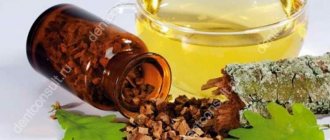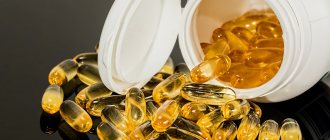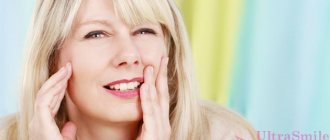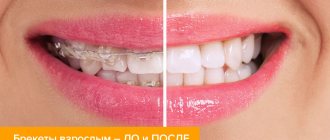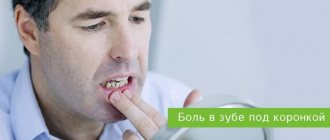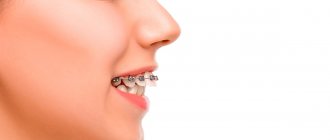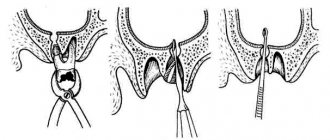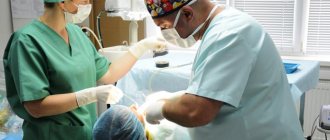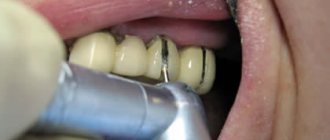September 22, 2020
Some people complain that their cheekbones are cramped. Typically, such a phenomenon cannot be classified as a specific diagnosis. Discomfort and pain in the cheekbones are, rather, a sign of various pathologies of the body. Which ones? Often we are talking about dental problems. The editors of the UltraSmile.ru portal have collected the most common of them in one article.
Some people complain that their cheekbones are cramped
Purulent infections in the mouth caused by advanced dental diseases
When the cheekbones and jaw are cramped, first of all, it is recommended to pay attention to the condition of the oral cavity. After all, an alarming symptom often indicates the following dental pathologies: acute periodontitis, gumboil, large cyst and granuloma, abscess, osteomyelitis and phlegmon.
During the development of these diseases, an inflammatory process occurs, severe swelling of the tissues, and pain and discomfort often spread to all nearby areas and do not have a clear localization. Unpleasant sensations manifest themselves even more strongly when pressing on a sore tooth, eating hard, hot and cold foods.
Jaw cramps: what are the causes and consequences
The risk of developing a condition where the jaw cramps cannot be assessed independently. The symptom of pain in the jaw area indicates the presence of at least several causes. It can be a sign of many diseases or a clear manifestation of the onset of pathology. The condition when the jaw cramps is typical for dentistry and neurology. If this situation occurs repeatedly and unpleasant sensations reduce the quality of life, we recommend that you do not hesitate and seek help from the Slalen dental clinic. Experienced specialists will determine the reasons why the jaw cramps and tell you what to do in a particular case.
Eruption of third molar
So it’s not easy to immediately answer the question of why the cheekbones on the face are cramped. But if your wisdom tooth on the upper jaw begins to erupt, then it is very possible that this unpleasant phenomenon is associated with this. The fact is that third molars erupt very difficultly and for a long time, they have to pierce the jawbone, and their roots can touch the nerve endings, which leads to discomfort and cramps in the facial area.
The eruption of “figure eights” can cause this symptom
Against the background of the eruption of the “eight”, an acute inflammatory process can develop, when the gums above it become very swollen, red and sore. Often this is also accompanied by purulent pericoronitis, if bacteria and food debris penetrate under the mucosa.
Pain in the cheekbone area of the face can occur due to the fact that the “eight” does not have enough space on the jaw and it grows incorrectly, for example, it begins to oppress the seventh unit. As a result, this leads to compression of the roots of the “seven”, to the fact that it, in turn, begins to move towards neighboring teeth. Such movements provoke malocclusion, crowded teeth, dysfunction of the maxillofacial apparatus, and muscle spasms.
What is hidden behind a typical symptom?
Perhaps the condition when the jaw cramps indicates that the inflammation spreads to the bone tissue. If pain or spasms occur immediately after sleep, a sign of bruxism appears on the face. This is a condition in which the muscles of mastication contract uncontrollably and the jaw clenches tightly. Most often, attacks of bruxism occur during night rest, but are also observed during the day. This symptom is a manifestation of a strong clenching of the jaw of a sleeping person. The problem threatens dysfunction of the temporomandibular joint. With this disorder, pain and spasm appear in the cheek area and the lower and upper jaws. When contacting a specialist, the doctor diagnoses the problem based on the incorrect position of the joint.
Among the main causes of jaw muscle spasm:
- stress, nervous overexcitation;
- dental pathologies;
- bruxism;
- overstrain of the jaw muscles;
- yawn;
- inflammatory diseases of the jaw joint (arthritis, arthrosis);
- osteochondrosis of the cervical spine;
- neuralgia of the superior laryngeal, glossopharyngeal nerves.
The most common cause of pain is injury. Fractures and displacements of the jaw, joint damage are characterized by acute pain and spasms. In addition, swelling, discoloration of the skin, and most importantly, loss of jaw mobility are observed in this area.
Dental problems come with several symptoms. Pain plays a leading role among them. It can be sharp, unbearable and intense, as if endless. This condition resembles a sensation as if the jaw is cramping.
What options are found in dental practice:
- Carious processes are in an advanced state. For example, when the pulp of the molars is inflamed (it contains many nerve endings).
- Inflammation in the bone tissue of the jaw. This condition is accompanied by an abscess, the formation of pus, swelling, and a feeling of fullness. Unbearable pain radiates to the jaw joint and downwards.
Painful sensations are accompanied by severe headache and high fever, which leads to a deterioration in general well-being.
Tooth extraction and other surgical procedures
If, after visiting a dental office to remove a tooth and undergo large-scale surgical procedures in the oral cavity (multiple implantations, bone augmentation, vestibuloplasty), you have a headache, cramped cheekbones and jaws, and general weakness, this can be considered quite normal.
After complex removal, it can also reduce cheekbones
Firstly, you experienced nervous tension and stress. Secondly, they sat for a long time with their mouths open (especially if the procedure was complex), and accordingly, during this time the muscles became numb and tired. Thirdly, during the surgical intervention a traumatic effect was exerted on the tissue, after which a normal physiological reaction occurred. At the same time, unpleasant sensations in the first day after medical manipulations often radiate to the head, jaw, and face.
If after 1-3 days the cheekbones cramp and the jaw hurts, other alarming symptoms also appear and increase (swelling, bleeding, increased body temperature), then the reasons should be sought in postoperative complications: alveolitis, gumboil, abscess, phlegmon. In this case, you should immediately consult a doctor.
Malocclusion
When aching pain in the cheekbones of the face and jaw occurs on a constant basis (they always seem to be present in the general background), this may signal that you have a malocclusion. If abnormalities are not corrected for a long time and treatment by an orthodontist is not performed, this leads to asymmetric contraction of the muscles of the jaws and neck, and uneven distribution of the chewing load. The cheekbones and temples begin to shrink, headaches, a feeling of tension and discomfort in the face appear.
An incorrect bite can also lead to this problem.
“When I first got braces, when I put pressure on my teeth, at first there was such a sharp pain that it made my cheekbones cramp and brought tears to my eyes. True, as soon as the pressure disappeared, everything immediately returned to normal. During the first month, I probably felt tension all over my face and jaw, but my doctor said that this was normal and would pass soon. And indeed, gradually these sensations stopped bothering me, I got used to it!”
Renakona Elena, review from 32top.ru
Trismus - the effect of jaw reduction
This term refers to spasm of the masticatory muscles, their involuntary compression (closing). Clenched jaws cannot be opened. This process is observed in a number of cases:
- pathologies or injuries of the dental-maxillary system;
- irritation of the trigeminal nerve, for example, during dental procedures;
- manifestation of tetanus, epilepsy (much less often).
There is acute pain in the facial area. It intensifies many times when you touch, try to chew, or even open your mouth. At the physiological level, there is a restriction in the temporomandibular joint. The patient cannot speak, eat, or breathe normally.
Symptoms:
- Bringing together one or two jaws. Spasm and tension of the masticatory and temporal muscles on one or both sides (jaw reduction). Their swelling and overstrain are observed.
- The mouth may be difficult to open or may not open at all. There is severe pain.
- Problems with speech and breathing appear.
- The general condition worsens, the body temperature rises.
Treatment is carried out in several stages: eliminating the cause (for example, embolization for a fracture or tooth extraction), prescribing medication and physiotherapy (for example, ultrasound, laser, electrophoresis).
Unsuccessful dental treatment and prosthetics
Why else do the cheekbones on your face shrink? From fillings and orthopedic structures installed in the oral cavity that do not correspond to the individual anatomical characteristics. In this case, again, the load is distributed incorrectly, certain areas are overstrained, the normal functionality of the maxillofacial apparatus is disrupted, muscle hypertonicity and even jaw trismus occurs.
The presence of orthodontic structures in the mouth can provoke a problem
To avoid the problem, you need to go to clinics where experienced doctors work, and also carry out comprehensive functional diagnostics (ideally, if digital!) immediately before treatment. All this allows us to create not only beautiful, but also the most convenient and comfortable restorations for the patient, which will eliminate the occurrence of additional problems and help correct the slightest pathologies and deviations in the functioning of the jaw.
Sometimes the cause of the problem is simply unskilled and too traumatic actions on the part of the doctor performing medical procedures. The specialist could give an incorrect injection of anesthesia, have too strong an effect on the surrounding tissues, or perforate the root or even the maxillary sinus during a particular procedure.
The face of an alcoholic: signs
The term “alcoholic face” is widely used in the medical industry. This concept implies a complex of the most characteristic features of the appearance of a person who abuses alcohol. Inexhaustible libations have a negative impact on all systems and organs. The result is the appearance of the following specific appearance features:
Deepening of the nasolabial fold in the upper part. At the same time, its lower part becomes smoother, which emphasizes the difference.
- The appearance of noticeable folds at the inner corner of the eyes. As a result, the organs of vision look more sunken.
- Nostril expansion. The nose swells, becomes deformed, and increases in size. Wrinkles appear on the bridge of the nose, diverging in an oblique direction.
- Thickening of lips. The outlines of this part of the face change. Due to the relaxation of the round muscle of the mouth, the lips are closed all the time.
The characteristic redness of the face is another striking sign of the appearance of an alcoholic. Regular consumption of alcohol in large doses leads to a decrease in the elasticity of blood vessels and capillaries and a violation of their integrity. As a result, spider veins appear on the face.
Violation of water-salt metabolism and the rate of elimination of excess fluid is reflected in the appearance in the form of edema. Together with a decrease in skin turgor, this leads to the appearance of dark circles and bags under the eyes. An additional factor is the relaxation of the circular muscles in this area, which also contributes to the formation of swelling. The face of a chronic alcoholic acquires characteristic swelling. Ultimately, this is fraught with the loss of the original outlines. The oval of the face becomes indistinct, as if blurred.
The outer layer of the epidermis dries out, peeling appears, and the face takes on an unhealthy hue. The consequence of addiction is early deep wrinkles. Constantly tense frontal muscles lead to pathological changes in the face, which becomes drooping and elongated.
All the described manifestations become more noticeable as the disease develops. Timely treatment of alcoholism can slow down negative processes in the body. However, regular, excessive and intense consumption of alcohol leaves an indelible mark on one’s appearance. Representatives of the fair sex are especially susceptible to this. Dehydration in women manifests itself more clearly and occurs much faster, which is associated with the characteristic features of female metabolism.
Bruxism or involuntary jaw clenching
When doctors explain to patients why the cheekbones on the face are cramped, many are surprised that the causes of the pathology may lie in bruxism. Although there is nothing unusual about this. This disease causes involuntary clenching of the jaws, overexertion, overload and spasms, pain and discomfort in the muscles.
Bruxism manifests itself in full glory while you sleep. But in the morning, many patients with this diagnosis feel tired, they have a headache and jaw pain, and there is a feeling that their teeth and cheekbones are cramping. A dentist will help you get rid of the problem by prescribing special mouth guards that relax your muscles while you sleep. But in order to cure the disease itself, it is recommended to undergo examination by a neurologist, since neurological causes often lead to the development of bruxism.
Bruxism can also cause discomfort
Bruxism is not exactly a dental disease. But in some cases it can be triggered by pathologies in the oral cavity: malocclusion, the presence of decayed teeth, poorly fitting crowns and fillings. Bruxism also leads to a number of dental problems if left untreated: cracking, pathological abrasion and hypersensitivity of enamel, deformation of artificial crowns and other prostheses.
Non-dental reasons
We looked at the main dental pathologies that may explain why the cheekbones on the face are cramped. But there are also many diseases and problems not related to teeth and the oral cavity. We list them below:
- injuries, bruises and blows received in the area of the face and maxillofacial apparatus: if the injury is very severe, for example, a fracture, then you may experience a feeling of cramping of the cheekbones and nausea,
- sedentary lifestyle and lack of physical activity: a number of researchers have come to the conclusion that with reduced physical activity, a person’s blood circulation is impaired, and this can lead to periodic cramping of the cheekbones, jaw and temples,
- hypoparathyroidism1: a disease caused by dysfunction of the parathyroid glands, leading to disruption of the metabolism of calcium and phosphorus in the body. It not only causes cramps in the jaws and cheekbones, but also causes muscle cramps in the lower and upper extremities,
- vegetative-vascular dystonia and other pathologies of the cardiovascular system,
- nervous tension, fear and stress, panic attacks,
- inflammation of the trigeminal and auricular nerves,
- ENT diseases: sinusitis, otitis, sinusitis,
- hypertensive crisis,
- frequent yawning,
- arthritis and arthrosis,
- osteochondrosis,
- oncology.
A blow to the jaw can cause a problem.
The problem does not always arise against the background of some serious pathologies, although, of course, its systematic appearance, or the persistence of a symptom for a long time, should be a reason to consult a doctor. Sometimes there is a feeling that your cheekbones are cramping after eating very acidic foods and drinks, because then salivation sharply increases and a reflex contraction of the jaw and parotid muscles occurs, which leads to a similar phenomenon.
Notice
: Undefined variable: post_id in
/home/c/ch75405/public_html/wp-content/themes/UltraSmile/single-item.php
on line
45 Notice
: Undefined variable: full in
/home/c/ch75405/public_html/wp-content /themes/UltraSmile/single-item.php
on line
46
Rate this article:
( 3 ratings, average: 5.00 out of 5)
prevention
- Farkhutdinova L.M., Ivanova M.A., Tunik V.F. Hypoparathyroidism: modern concepts and analysis of a clinical case // Archives of Internal Medicine. – 2016.
Expert “Advanced dental diseases often lead to ENT pathologies, since bacteria from the mouth easily move to adjacent organs, where they provoke inflammatory processes. Why, for example, do some patients have cramping cheekbones when they have diseased teeth in the upper jaw? The reasons may lie in damage to the sinuses and the development of odontogenic sinusitis. It arises from deep caries, pulpitis, cysts, periodontitis. Against this background, swelling of the surrounding tissues, numbness, pain and spasms appear, radiating to all parts of the face and jaw.” Dentist-therapist Elena Vladimirovna Orlova
Why does my cheekbones and jaw shrink?
Reduces cheekbones and jaw (the reasons will be determined by a comprehensive diagnosis) due to several factors:
-Injuries and diseases of the temporomandibular joint:
- congenital;
- acquired, inflammatory nature:
- osteoarthritis (osteoarthrosis) – thinning of the cartilage in the joint, accompanied by the proliferation of bone tissue;
- neoarthrosis – the formation of a false joint in an unusual place;
- ankylosis - fusion of the articular ends of bones and decreased mobility of the temporomandibular joint;
- injuries.
-Functional states:
- juvenile dysfunction of the temporomandibular joint;
- arthritis (inflammation of the joint) and arthrosis (non-inflammatory change in the joint), which can be caused by autoimmune disorders, infections (tuberculosis, syphilis, viral pathologies), systemic disorders (systemic lupus erythematosus, purpura) and other diseases (hepatitis and others).
-Dental diseases (premature destruction or abrasion of teeth, periodontal disease and other infectious lesions).
-Conditions not associated with organic disorders (neurological):
- Bruxism – clenching the jaw and grinding teeth;
- damage to the trigeminal nerve;
- muscle spasms.
The temporomandibular joint can move in 3 directions. It is a combination of 2 separate joints. The joint is highly susceptible to age-related changes.
The critical periods in its development are:
- germination of baby teeth;
- replacing baby teeth with permanent ones;
- tooth loss in old age.
The growth of the joint stops by the age of 20, but throughout life adaptation processes and changes continue in it. The peculiarities of its structure largely determine the severity of the condition when inflammatory processes occur.
If only the lower jaw
If only the lower jaw cramps and this is accompanied by severe pain, then the cause may be trigeminal neuralgia. Most often, this violation is right-sided in nature.
It develops as a result of the influence of the following factors:
- facial bone tumors;
- vascular diseases;
- the presence of uncomfortable dentures that disrupt the bite;
- ossification of the mandibular canal or infraorbital foramen;
- lichen (simple or shingles);
- metabolic disorders;
- allergy;
- stress, emotional and physical stress.
Most often, this disorder occurs in women aged 50-70 years. In this case, attacks of acute facial pain occur, similar to an electric shock. It can last from a few seconds to several minutes.
Provoking factors for the occurrence of unpleasant sensations are talking, eating, washing and other movements of the facial muscles. When it appears, redness of the facial skin, lacrimation, twitching of the chin and eyes may occur.
Simultaneously cheekbones and jaw
It reduces the cheekbones and jaw (the reasons for this may be arthrosis or arthritis of the temporomandibular joint) as a result of a chronic inflammatory process, which causes degenerative changes to develop.
This condition is characterized by pain, decreased jaw mobility, and difficulty opening the mouth due to pain. X-ray photographs reveal the erosion of the surface of the joint and its deformation. When pressing on the joint, the pain intensifies.
There are several types of arthritis:
- Purulent. Due to purulent inflammation, soft tissues swell; when pressing with fingers, sharp pain occurs in the joint area.
- Rheumatoid. It is formed against the background of systemic damage to connective tissue. Usually several joints are damaged at once - hand, wrist, foot. To diagnose this disease, rheumatoid factor (autoantibodies) is determined.
- Psoriatic. In addition to unpleasant sensations in the jaw, the patient has psoriatic lesions of the skin and nails.
- Infectious. Bacteria can be introduced into the joint directly when it is injured or hematogenously (through the bloodstream) from sources of other localization during purulent otitis, furunculosis, sore throat, tuberculosis, rubella and other pathologies.
- Reactive. It is a type of infectious and occurs 1-2 weeks after dysentery, chlamydia, salmonellosis, syphilis, enteritis, viral hepatitis and other diseases.
- Traumatic, arising from a bruise, blow or wound, chronic microtrauma, malocclusion.
When yawning
When yawning, this condition occurs as a result of injury to the joint when the lower jaw is abducted too widely, or as a consequence of a previous disease or injury. To reduce muscle tension, you should reduce the load on the temporomandibular joint. It is also necessary to avoid rough, hard foods.
Bruxism
Bruxism is the grinding of teeth as a result of involuntary tension in the chewing muscles. Most often it appears at night. Bruxism significantly affects the condition of the dentofacial apparatus and leads to a decrease in the height of the bite. This, in turn, serves as a risk factor for the development of pain in the temporomandibular joint.
In modern medicine, emotional stress and pathologies of the central nervous system are considered the main causes of bruxism. Therefore, in this case, the help of a neurologist and psychologist is required. Some medications can also enhance this phenomenon.
Cramp of nerves
Nervous and emotional stress can also contribute to increased tone of the facial muscles during wakefulness. Provoking factors include a state of fear, anger or prolonged waiting. In this case, muscle spasms occur, which cause discomfort. In this case, sedatives are primarily indicated.
While eating
The main cause of cramps during meals is overstrain of the masticatory muscles.
Risk factors include:
- malocclusion;
- chronic microtrauma of the temporomandibular joint when eating nuts, raw carrots and other solid foods that require significant chewing effort;
- increased physical activity;
- previous injuries;
- eating acidic foods, which causes reflex muscle contraction;
- difficulty swallowing saliva;
- psycho-emotional arousal.
Dental diseases
The development of spasms and damage to the temporomandibular joint is promoted by dental diseases such as:
- malocclusion;
A pathological bite may be the reason why the cheekbones and jaw are brought together - violation of the dentition when using dentures or implants;
- caries, stomatitis, pulpitis, gingivitis, periodontal disease and other inflammatory pathologies.
In addition, with age and loss of teeth, the joint height decreases. As a result, the head of the joint shifts, injury to blood vessels and nerves; the articular disc, consisting of connective tissue, atrophies. As a result, arthritis deformans may develop.
Psychosomatic and neurological disorders
In addition to stress and overexertion, psychosomatics identifies the following causes of spasms in the masticatory muscles:
- a sense of responsibility for other people and solving other people's problems;
- various phobias;
- feelings of shame or guilt;
- lack of attention from relatives and close people;
- feeling of powerlessness in difficult life situations;
- separation or loss of a loved one.
Other reasons
It also reduces cheekbones and jaw for the following reasons:
- Dislocation and subluxation of the temporomandibular joint. Often, a subluxation is asymptomatic and does not require medical intervention for its reduction. The most characteristic symptom is clicking in the joint when lowering the jaw, when speaking and during palpation. Patients also report pain of varying intensity, aggravated by chewing, yawning or screaming. It can radiate to the ear, back of the head, temple. Risk factors include infectious diseases (including influenza) and metabolic disorders.
- Fracture of the condylar process , which serves to articulate the lower jaw with the temporal bone.
- Formation of pathological bone growths (osteophytes) in the temporomandibular joint. They can appear with frequent deforming loads and with impaired calcium metabolism in the body.
- Reiter's disease – an allergic reaction that occurs after an infectious disease.
- Medical errors on the part of dentists, orthodontists, surgeons , leading to disruption of the temporomandibular joint (placement of oversized fillings, violation of symmetry during prosthetics, causing the formation of unilateral loads, long-term dental procedures leading to hyperextension of the ligaments).
- Activities associated with overstrain of the facial muscles - singing, reciting poetry.
Comments
My wisdom tooth is coming out because I feel a lump under my gum in that place. This seems to be causing my jaw to ache all the time lately. Is it really because of this that it will have to be removed now?
Dilyara (02.10.2020 at 16:15) Reply to comment
- Dear Dilyara, it all depends on the condition of the wisdom tooth. If it has the correct direction of growth, does not threaten neighboring elements of the row, and is not affected by caries and other dental diseases, then it does not need to be removed. However, it is recommended to monitor the process of its eruption over time. After all, it may also happen that it does not come to the surface at all or only partially, which often happens with third molars. See a doctor and take an x-ray to understand why the unpleasant symptom occurs, and then decide whether to remove or save.
Editorial staff of the portal UltraSmile.ru (06.10.2020 at 10:20) Reply to comment
